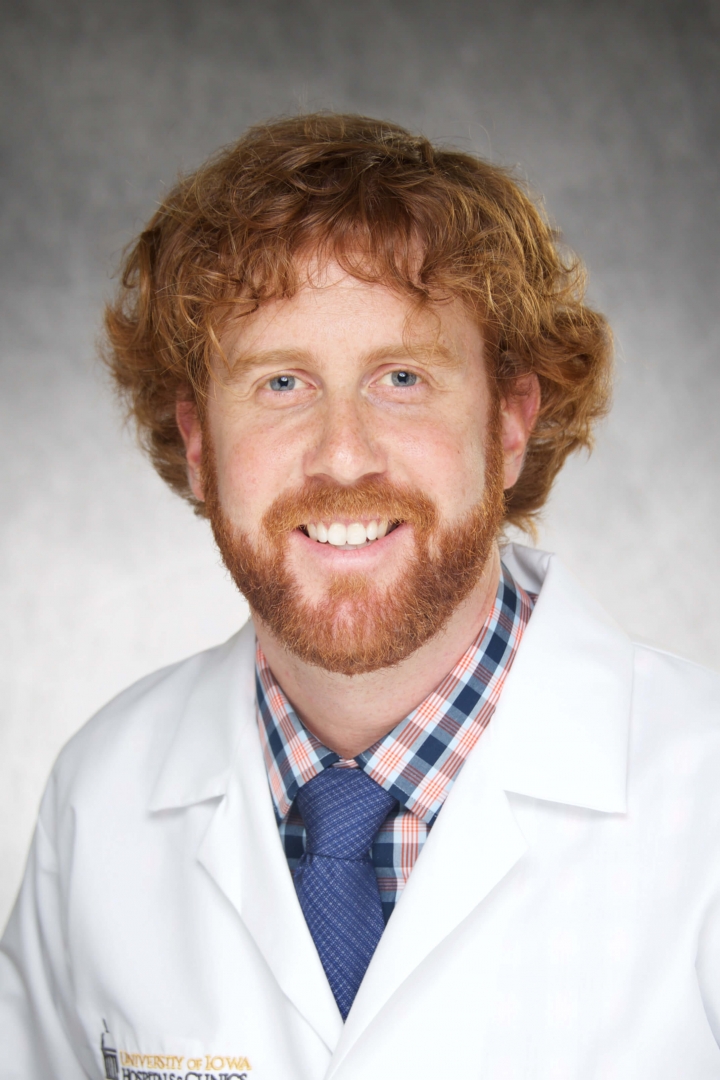Overdose Prevention Sites
Overdose Prevention Sites
Overdose prevention sites are also commonly known as safe consumption spaces, or safe injection facilities. Nearly 100 exist all over the world, including in Canada, and no overdose deaths have ever been recorded in one such facility. In these spaces, people who use drugs may enter and consume any substance under the supervision of a medical professional.
While professionals do not facilitate drug use, their presence ensures that if someone begins to experience adverse consequences (eg. overdose), they may administer narcan / naloxone or provide other medical interventions.
In communities where overdose is of significant concern, safe consumption spaces offer the promise of reduced overdose fatalities. Yet in order to allow these facilities to operate in the US, significant support is necessary from federal officials.
READ MORE
Nothing found.
Get Involved
Naloxone Access
Naloxone Access
Naloxone (brand name Narcan) is an opioid antagonist that, when administered, acts to block the brain’s opioid receptors. This means that in the event of an overdose, naloxone can be administered in order to reverse the effects of the toxic opioid, and thus bringing the overdosing individual back to life.
Naloxone is a medication that is often referred to as, “safer than tylenol,” “a magic bullet,” and “one of the safest, least misused, drugs available.” Despites its power and efficacy, naloxone remains difficult to access in many states.
A number of studies have found that naloxone can be safely and effectively distributed to and used by lay persons (i.e. people who use drugs), but stigma prevails, and many states do not have programs that make naloxone readily available via community-based organizations that, especially those that actively engage people who use drugs. There are many solutions that the federal government may enact in order to expand the availability of naloxone to people who use drugs around the U.S. including acknowledging that the most effective naloxone distribution programs are, in fact, community-based organizations made up of and working with people who use drugs.
READ MORE
Nothing found.
Get Involved
HIV Getting to Zero
HIV Getting to Zero
Many leaders around the world are calling for the elimination of new HIV infections, via the elimination of HIV transmission. From global health organizations to President Donald Trump, this goal has been uplifted by many and has become a priority for U.S. public health efforts. But “Getting to Zero” will take sustained effort, ongoing leadership, commitment of extensive resources, and the prioritization of effective, evidence-based interventions.
HIV continues to be a major public health crisis in the U.S. with almost 40,000 new cases each year, compounded by the syndemics of opioid use, viral hepatitis, sexually transmitted infections (STIs), and tuberculosis (TB). While the more than 1.2 million people living with HIV in the U.S. reside in every congressional district, State, and territory, new cases of HIV and HIV/AIDS-related deaths are increasingly concentrated in communities of color, among members of the LGBTQ community, and in the Southern states. While communities across the U.S. have already begun taking concrete steps to end their state and local HIV epidemics, ending the HIV epidemic across the country will require increased Federal commitment and the concerted and coordinated efforts of community-based organizations, state and local governments, people living with and vulnerable to HIV, communities, clinicians, and service providers.
The United States now has the tools and ability to end the HIV epidemic at home. Over 250 organizations have called on the U.S. government to officially declare that it is our goal to end the HIV epidemic in the United States by 2025 and enact legislative and regulatory changes to achieve this goal.
We can change the trajectory of the U.S. HIV epidemic by setting and meeting the ambitious but achievable goal of reaching a 95/95/95 framework for HIV care (95% of people living with HIV are aware of their HIV status, 95% of diagnosed individuals are retained in care, and 95% of individuals on antiretroviral therapy virally suppressed), significantly increasing access to combination prevention for people who are HIV negative, and taking concrete action to ensure that no population or region is left behind.
But we must bring all available treatment and prevention tools to scale now to have the necessary impact on the epidemic. Failure to act swiftly at the required scale and across all affected communities and populations will result in more HIV transmissions, more HIV-related morbidity and mortality, continued health inequities, and increased health care costs.
Through the joint effort of community, all levels of government, and industry, we can harness the progress made over the last three decades to achieve a once unthinkable goal.
Nothing found.
Get Involved
Hepatitis C Treatment Access
Hepatitis C Treatment Access
Hepatitis C is a viral infection that can cause harm to the liver over many years. There is no vaccine for hepatitis C (HCV), and the virus is typically transmitted via blood transfusions (before 1992) or IV drug use. Treatment for HCV has historically been ineffective, complex, and accompanied by painful side effects. However, in 2014 the FDA approved a new set of medications (DAAs) that offer a highly effective cure (without significant side effects) in approximately 8-12 weeks via a daily pill. While these medications previously cost ~$100,000 per course of treatment, the cost of the drugs have decreased rapidly, now carrying a typical sticker price of just under $20,000. Treating patients living with HCV is of significant public health importance, as patients who are left untreated may develop liver cancer, cirrhosis, and require a liver transplant. Yet due to the perceived high cost, many health care payors (particularly Medicaid) across the country have created barriers to accessing the treatment. For example, in Iowa a patient must document six months of sobriety from alcohol and drugs, as well as stage three or four liver damage (out of four stages), in order to receive the medication. These medications do not reverse liver damage, thus it is important to treat patients for HCV immediately after diagnosis. Furthermore, active drug users are the most likely to transmit the virus.
By treating all people, regardless of sobriety, we can significantly reduce the rate of transmission and of new cases. While some have argued that people who use drugs do not care about their health enough to take a medication as prescribed, multiple studies have documented that people engaged in chaotic substance use are able to complete treatment easily.
HCV is the leading infectious disease killer in the United States, and kills more people each year than the next 60 leading infectious diseases, combined. There are millions of people in the U.S. living with hepatitis C, but without federal action to ensure evidence-based, equitable, and unlimited treatment access, countless lives will be lost and billions of dollars generated in health care cost.
READ MORE
Iowa Department of Public Health Hepatitis Action Plan, 2017 – 2021
Hepatitis C: The State of Medicaid Access; Center for HIV Law and Policy, Harvard University
A National Strategy for the Elimination of Hepatitis B & C; Institute of Medicine
2019 Viral Hepatitis Progress Report; National Viral Hepatitis Roundtable
Nothing found.
Get Involved
Voting Rights Restoration
Voting Rights Restoration
Following the 2016 election, the voting rights remains as critical as ever. Politicians across the country continue to engage in voter suppression, efforts that include additional obstacles to registration, cutbacks on early voting, and strict voter identification requirements. Voting access is determined by a person’s felon status / past felony charges, availability of same-day and online voter registration; access to mail-in and/or early voting; requirement for government identification to vote; and other voter suppression tactics that may prohibit people from entering a polling place. Historically, people who use drugs who have been charged with and convicted of a felony have been prohibited from voting.
Iowa is one of only two remaining states that restricts voting rights for life for anyone convicted of a felony – current efforts are underway to amend the Iowa constitution in order to repeal this restriction.
The Executive branch has many opportunities to expand and ensure access to voting for people who use drugs.
READ MORE
Nothing found.
Get Involved
Drug Decriminalization
Drug Decriminalization
Each year, there are more than 1.6 million drug arrests in the United States. More than 85% of these arrests are for possession only, and many more are for minor selling and distribution violations. Twenty-two states have decriminalized the possession of small amounts of marijuana. Other jurisdictions are experimenting with de facto decriminalization through Law Enforcement Assisted Diversion (LEAD) programs. LEAD directs people to drug treatment or other supportive services instead of arresting and booking them for certain drug law violations, including possession and low-level sales. Drug decriminalization (of all drugs, not just marijuana) eliminates criminal penalties for drug use and possession; possession of equipment used to introduce drugs into the human body (such as syringes); and low-level drug sales.
There are a number of benefits to drug decriminalization, including fiscal savings as the result of reducing prison and jail costs, as well as prison and jail population sizes; and law enforcement resources that are increasingly available to address violent crime and other community concerns.
Decriminalization also prioritizes health and safety over punishment for people who use drugs. For those who know that “we cannot arrest our way out of this problem (drug use),” drug decriminalization is the regulatory process through which substance use is recognized as a health care issue, rather than a criminal one.
READ MORE
Nothing found.
Get Involved
Substance Use Treatment Access
Substance Use Treatment Access
Substance use disorder treatment is notoriously difficult to access, complicated both by geography and financing. For opioid use disorder, as many chronic health conditions, pharmaceutical therapy is the first line of treatment. Yet the recommended medications – methadone, buprenorphine, and naltrexone – are tightly regulated, which makes increasing their availability to meet consumer demand a challenge. Methadone must be offered outside of the health care system in individual clinics, while prescribers must obtain training and licensure to prescribe buprenorphine, beyond their existing training as prescribers.
This creates a high level of system complexity, in which many people seeking treatment – even those with a remarkable degree of health literacy – often fail to identify a provider who can help them.
Transportation further complicates treatment access, particularly for those individuals living in rural communities who must visit a methadone clinic on a daily basis, or travel over four hours to the nearest suboxone (buprenorphine) prescriber. On top of these unique challenges, people without health insurance and those whose insurance chooses not to cover substance use disorder treatment are excluded from care, making recovery unattainable for many patients. Many barriers to treatment access can be easily addressed at the federal level and by the President, including the abolition of the X waiver process for medical professionals to prescribe suboxone. The President may also expand health care access, thus expanding treatment access, and work with congress to continue the flow of federal dollars into communities in order to ensure that funding is available for treatment for those that desire it.
READ MORE
Nothing found.
Get Involved
Syringe Access
Syringe Access
Syringe exchange programs are critical to ending the spread of HIV, and to eliminating hepatitis C. The simple distribution of sterile hypodermic needles and syringes has been found to dramatically reduce the rates of bacterial infections of the skin and soft tissues, along with viral infections. The legalization of syringe exchange programs has been determined at the state level, but currently a federal ban prohibits the use of federal dollars for the purchase of needles and syringes – the necessary tool to HIV and HCV prevention. Be it ideological or financial, support for syringe exchange programs is critically important, and their impact extends far beyond HIV/HCV prevention. Syringe services programs are an opportunity to develop an infrastructure of support services for people who use and inject drugs. Robust funding of syringe service programs that can adequately support a given geographic area are a critical way to reach and engage a community of people that is often believed to be “hard to reach.”
With services that include syringe exchange, HIV and HCV testing, naloxone distribution and overdose prevention, linkage to drug treatment, and case management services for HCV, syringe exchange programs offer a robust set of health and social services that can significantly improve the health and wellbeing of people who use drugs – particularly when well-funded.
Without harm reduction services offered by syringe exchange, there is no need for treatment or recovery services.
READ MORE
Nothing found.
Get Involved
The Consequence of a Single Story
On a gray Saturday morning wet with April snow, eight storytellers met in the IHRC offices. The stories they told were small in scale and personal, with great power to explain the mission of IHRC.
Everyone’s story is worth telling. That’s the fundamental truth of StoryCenter. For three decades, StoryCenter has been supporting organizations and individuals in using digital storytelling for reflection, education, and social change.
As a storyteller and facilitator, I’ve seen the StoryCenter model help people transform their most meaningful moments into powerful video stories. These stories empower tellers and engage viewers. The IHRC community is rich with stories that deserve to be heard. So last spring, researchers from the University of Iowa College of Public Health, the College of Education, and I ran the first digital storytelling workshop at IHRC.
Digital stories are three-minute videos with narration, photos, and artwork. They aim to capture some moment from our personal stories that can have a greater meaning and resonance.
At first, distilling a journey of decades into 400 words is overwhelming – how do you pick just one meaningful moment from a life full of them? But storytellers trusted in the process, and pushed back when they needed to. A 40-minute story circle for sharing and refining narratives turned into an epic three-hour bonding session as storytellers spilled over with life histories, listening to others and reflecting love and support. Storytellers said they valued the opportunity to talk without being judged, to give support to others, and to help advocate for people whose voices should be heard.
Recording audio, adding images, and editing videos ran right up against the end of our second day. By Sunday afternoon, we were ready for the screening. Each video is deeply personal, beautiful, and worth seeing. These are stories of drug use, sure, but mostly they follow those human arcs we all share. Finding hope, leaving home, being a family, loving your kids, becoming an artist, saving someone’s life, changing yours.
I don’t want to give too much away. You should seek these stories out and watch them. With more workshops planned for next year, we hope to give more people the opportunity to tell their IHRC stories.
One of my favorite writers, Chimamanda Ngozi Adichie, talks about the what she calls the single story. “The consequence of the single story is this,” she says “It robs people of dignity. It makes our recognition of our equal humanity difficult. It emphasizes how we are different rather than how we are similar.”
The stories created in our workshop challenge the stereotypical single story of drug use. With the permission of the storytellers, they’ll used in IHRC education and advocacy work. As one storyteller said, “I think pretty much everyone could benefit seeing them, to help people understand that us drug users are just as human as non-users.”
Written by:
Rachel Young, MPH, PhD
Assistant Professor
School of Journalism and Mass Communication
University of Iowa
Fentanyl: Separating Fact from Fiction

In case you haven’t heard, fentanyl is a dangerous drug. Story after story all appear to come to the same dramatic conclusion: if you touch even a miniscule speck of fentanyl, you will immediately die.
There is so much sensationalism surrounding fentanyl that the preferred unit for measuring fentanyl seems to be in the number of people it could kill. Take this article from Arizona in February 2019. It states that “in Arizona in 2018, the DEA…seized 445 pounds of fentanyl…which is roughly enough to kill 75 million people.” Statistics like this are not only misleading, but add greatly to the stigma surrounding drug use.
This is not to say that fentanyl should not be taken seriously for those who are using drugs. We recently had a patient on the toxicology service who took what he thought was a Percocet, but actually contained fentanyl. The two friends that he used with woke up, but he did not. Finding the true number of fentanyl-related deaths and overdoses is made difficult by testing limitations at most hospitals, as fentanyl is not a drug that is detected on most commonly used urine drug screens. However, studies have shown that mortality from fentanyl and its derivatives has increased up to 300% among young adults since 2013 (Krieger 2018). The steep rise in opioid deaths correlates almost directly with the rise in contamination of heroin with fentanyl and its derivatives (CDC 2017). For this reason the Iowa Harm Reduction Coalition (IHRC) recommends checking drugs with fentanyl test strips before use. Fentanyl contamination is also not limited to opioids. It has been found in methamphetamine, cocaine as well as other drugs. Though the risks of contamination of other drug classes may also be overblown.
While the danger of fentanyl is certainly real for people who use drugs (PWUD), there is a myth that continues to be spread across the media that fentanyl poses a significant risk to police and other first responders. This dramatically overblown response ignores both the reality of the way fentanyl works and the fact that in almost every case, the symptoms described by those reportedly experiencing “unintentional overdoses” don’t match up with the actual human responses to an opioid overdose. Unfortunately, this myth does create the risk of real world harm: increasing stigmatization and fear of PWUD. The fear of exposure causes police to see PWUD as dangerous. Based solely on a story they heard from a friend or saw online, they may be hesitant to provide life-saving naloxone for someone who desperately needs it. The problem is that few, if any of these stories represent true opioid toxicity. These stories do highlight some fundamental principles that I always discuss with medical students and residents who I teach in my Toxicology course at the University of Iowa: the first being that exposure does not equal toxicity. For an exposure to lead to toxicity, enough of the drug needs to be absorbed and get into the person’s circulation in order for it to have an effect.
The most common routes of exposure in these sensational media articles are skin contact and accidental inhalation. Either some white powder brushed a first responder’s skin or was aerosolized by a fan or other means. While fentanyl is amenable to dermal absorption, it is not a quick process. Fentanyl patches that are used therapeutically take 3-13 hours to reach a therapeutic concentration (ACMT 2016). If you covered both of your palms with fentanyl patches, it would take around 14 minutes to receive 100 micrograms of fentanyl, which is a common dose for pain relief that physicians prescribe to an adult patient. While fentanyl has pretty good absorption through the lungs, the drug itself is very difficult to aerosolize in any significant amount that could lead to toxicity. Fentanyl derivatives have likely been aerosolized and weaponized in Russia, but this is a unique case and likely required specialized formulation and/or dispersal devices. The small risk of significant dermal or inhalational exposure would easily be mitigated with a regular pair of latex or nitrile gloves and a simple face mask, which are already standard PPE (personal protective equipment) for any first responder.
The second principle I teach to my toxicology students is that the symptoms that a patient is having must match the poison in order to establish a causal link. Fentanyl is an opioid and toxicity from all opioids results in the classic triad of small pupils, central nervous system depression (somnolence, nodding off), and respiratory depression. This last effect is why opioid toxicity is deadly: it stops the person from breathing. The cases that are reported in the media often describe dizziness, lightheadedness, numbness, palpitations (racing/heavy heartbeat) and a myriad of other symptoms that don’t fit with opioid toxicity. And while I can’t say I was there with the officers in these cases, their symptoms sound suspiciously like a panic attack. Symptoms of which often include lightheadedness, dizziness, palpitations, chest pain, and hyperventilation. These types of symptoms are justifiable for other reasons: law enforcement, EMS, and other first responders have stressful jobs, in which they may regularly experience anxiety and trauma. Given that they are continually hearing about the dramatic danger of an instant and potentially fatal overdose from incidental fentanyl exposure, a panic attack is an understandable response to encountering an individual who has overdosed and being tasked with the responsibility for saving their life. Naloxone, the antidote to opioid toxicity, unfortunately does not treat panic attacks or anxiety.
It is also important to remember that just because someone received naloxone does not mean that they needed naloxone. In the Emergency Department, naloxone is reserved for those patients who are showing signs of significant toxicity, as in respiratory depression. We do not administer naloxone to someone just because they are sleepy, since that’s not what kills them. The most egregious example of someone getting naloxone that doesn’t need it is the officer who self-administers naloxone. If you are overdosing on opioids, you will not be able to give yourself naloxone (see signs of opioid toxicity above). So if there is one thing to remember from this article, it’s this: if you can administer naloxone to yourself, you do not need naloxone. This is why if you’re going to use opioids, you should always use with someone else, with naloxone readily accessible.
The extremely low likelihood of significant absorption and the disconnect between the reported symptoms make it highly unlikely that any of these cases represent opioid toxicity. I am not aware of a single case of supposed fentanyl exposure that has been confirmed. There is a large group of physicians, harm reductionists, twitter personalities, and others who have been trying to dispel this myth for years. The American College of Medical Toxicologists and the American Academy of Clinical Toxicology released a joint position statement on fentanyl exposure. IHRC’s own Dan Runde also wrote an article about the myth of fentanyl exposure for first responders. And finally, some media outlets have started to listen to all of us fighting this myth.
By not using evidence-based approaches to fentanyl, we are putting those who use drugs at even greater risk. The delay it may take to receive naloxone from a first responder because they are worried about passive fentanyl exposure could mean all the difference for the person who overdosed. By perpetuating the myth that fentanyl poses a significant risk to first responders, the media has increased the danger and the stigma towards PWUD.
Written by:
Dr. Josh Radke
Emergency Medicine Physician
Associate Professor of Medical Toxicology
University of Iowa Hospitals and Clinics
References:
- Junious, Luv. Cronkite News. Arizona PBS. Downloaded from: https://cronkitenews.azpbs.org/2019/02/22/as-fentanyl-seizures-rise-so-do-safety-concerns-around-the-deadly-drug/
- Krieger, et al. High willingness to use rapid fentanyl test strips among young adults who use drugs. Harm Reduct J. 2018 Feb. 15:7
- Hedegaard, et al. Drug Overdose Deaths in the United States, 1999 – 2016. CDC National Center for Health Statistics. Downloaded from https://www.cdc.gov/nchs/products/databriefs/db294.htm.
- Daly, Max. The truth about drug dealers lacing cocaine with fentanyl. Vice News. Downloaded from: https://www.vice.com/en_us/article/8xyzkp/the-truth-about-drug-dealers-lacing-cocaine-with-fentanyl
- ACMT and AACT Position Statement: Preventing Occupational Fentanyl and Fentanyl Analog Exposure to Emergency Responders. Downloaded from: https://www.acmt.net/_Library/Positions/Fentanyl_PPE_Emergency_Responders_.pdf
- History.com Editors. Hostage crisis in Moscow theatre. History.com. Downloaded from: https://www.history.com/this-day-in-history/hostage-crisis-in-moscow-theater
- Runde, Dan. Myths in Emergency Medicine: First Responders Worried about Fentanyl OD? Minimize Fear by Quashing that Myth. Emergency Medicine News. 2018. Vol 40. P. 33.
- NY Times Editorial Board. Fear, Loathing and Fentanyl Exposure. New York Times. Downloaded from: https://www.nytimes.com/2019/04/04/opinion/fentanyl-opioids-exposure.html












